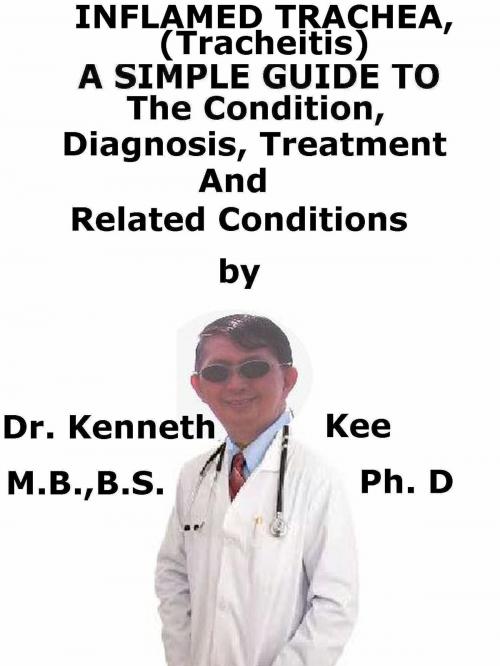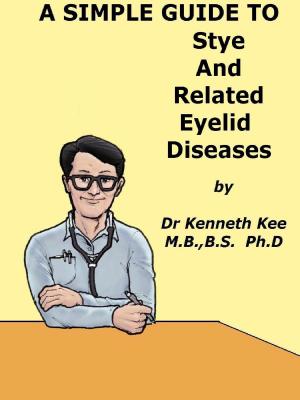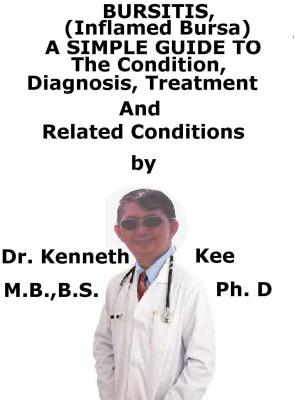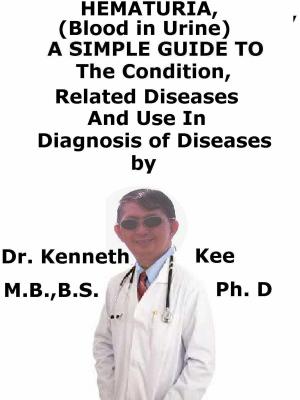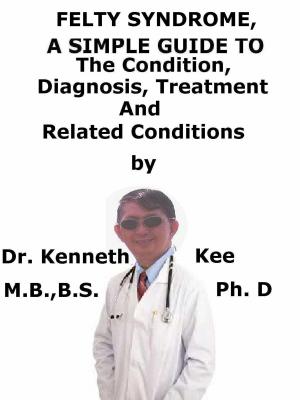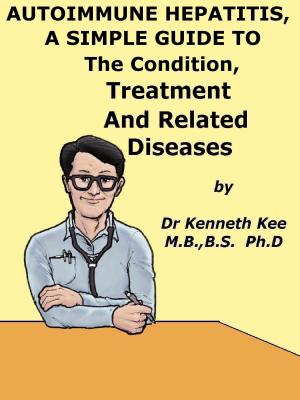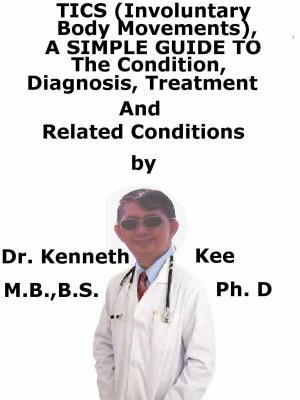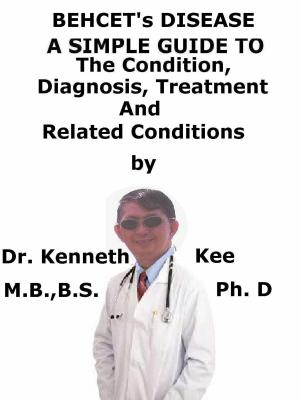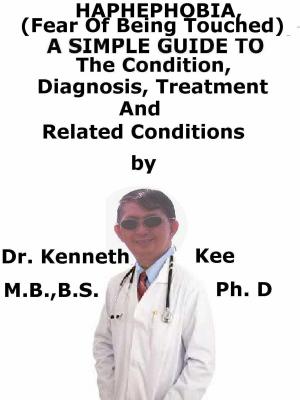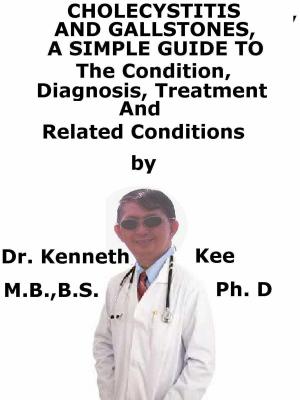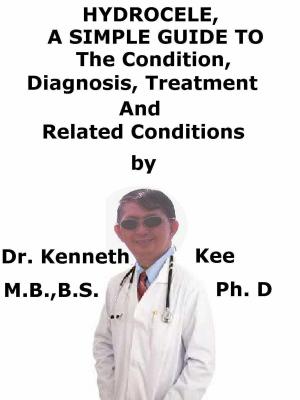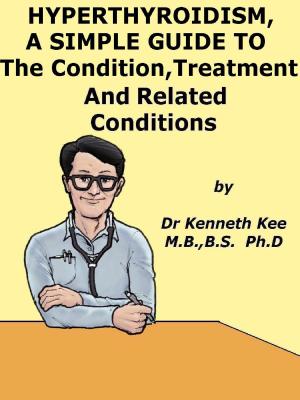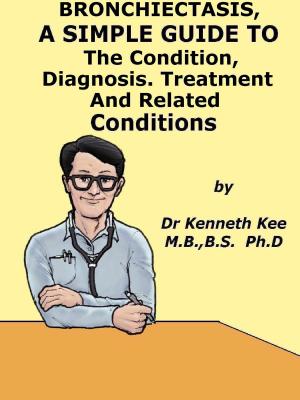Inflamed Trachea, (Tracheitis) A Simple Guide To The Condition, Diagnosis, Treatment And Related Conditions
Nonfiction, Health & Well Being, Medical, Specialties, Pulmonary & Thoracic, Health, Ailments & Diseases, Respiratory| Author: | Kenneth Kee | ISBN: | 9781370224630 |
| Publisher: | Kenneth Kee | Publication: | June 23, 2017 |
| Imprint: | Smashwords Edition | Language: | English |
| Author: | Kenneth Kee |
| ISBN: | 9781370224630 |
| Publisher: | Kenneth Kee |
| Publication: | June 23, 2017 |
| Imprint: | Smashwords Edition |
| Language: | English |
Inflamed Trachea (Tracheitis) is an acute medical disorder that causes inflammation and infection of the trachea (windpipe) that leads to the lungs.
The mucous membranes of the windpipe becomes inflamed from bacterial or viral infection or irritated by fumes and dust in the air leading to swelling of the tracheal mucosa with excess mucous discharge inducing narrowing of the air passages.
Because of the congestion of the windpipe there is difficulty in breathing and insufficient oxygen to the body thus posing a danger to the patient's life.
The most frequent cause of tracheitis is a bacterial infection.
Bacterial tracheitis is a bacterial infection that can develop in the trachea.
Most cases of it occur in young children, following an upper respiratory tract infection URTI).
Quick treatment is important to lowering the risk of life-threatening complications
It affects mostly young children.
This may be because their tracheas are smaller and more easily blocked by swelling
Following an URTI, bacteria can more easily invade the child’s trachea.
This can cause infection, inflammation, and rapid swelling.
Because of the small size and position of the child’s trachea, even mild swelling can quickly block their airway.
Even though bacterial tracheitis can also affect adults, it tends to develop more slowly in them.
Symptoms are:
1. High fever
2. Deep severe cough (similar to that caused by croup)
3. Difficulty breathing – may need emergency treatment
4. Wheezing
5. Nasal flaring
6. Cyanosis, a blue tinge to their skin – may need emergency treatment
7. Retro-sternal pain or discomfort (breastbone pain)
8. Sore throat
9. Hoarse voice
10. Painful swallowing
There is dry, painful cough that is deep and bark-like in nature.
The child’s doctor will do a physical exam and listen to the child's lungs for symptoms of respiratory distress.
The muscles between the ribs may pull in as the child tries to breathe.
This is called inter-costal retractions.
Tests that may be done to diagnose this condition include:
1. Blood oxygen level
2. A nasopharyngeal culture, which is a sample of secretions from the uppermost part of the child’s throat to test if bacteria are present.
3. A tracheal culture, which is a sample of secretions from the child’s trachea.
4. An X-ray of the child’s airways to see if any inflammation, swelling, or infection exists.
5. Tracheoscopy (endoscopy), to view the throat using a thin tube with a camera.
Conventional treatment for tracheitis may consist of simple measures such as
a. getting plenty of rest,
b. drinking lots of fluids,
c. avoiding smoke and fumes,
d. getting a prescription for a cough syrup.
The child’s doctor will give them antibiotics to kill the bacteria causing their infection.
They will likely administer these drugs intravenously.
The child’s doctor will also focus on clearing the child’s airway.
The child often needs to have a tube placed into the airways to help with breathing.
They may require placing an endotracheal tube into the child’s trachea to make them breathe.
When the tube is positioned, the child’s doctor will connect it a ventilator.
This can help improve the child’s lung function while they recover from their infection.
The intensive care team will closely monitor the child's breathing and use oxygen, if needed.
TABLE OF CONTENT
Introduction
Chapter 1 Inflamed Trachea (Tracheitis)
Chapter 2 Causes
Chapter 3 Symptoms
Chapter 4 Diagnosis
Chapter 5 Treatment
Chapter 6 Prognosis
Chapter 7 Laryngitis
Chapter 8 Croup
Epilogue
Inflamed Trachea (Tracheitis) is an acute medical disorder that causes inflammation and infection of the trachea (windpipe) that leads to the lungs.
The mucous membranes of the windpipe becomes inflamed from bacterial or viral infection or irritated by fumes and dust in the air leading to swelling of the tracheal mucosa with excess mucous discharge inducing narrowing of the air passages.
Because of the congestion of the windpipe there is difficulty in breathing and insufficient oxygen to the body thus posing a danger to the patient's life.
The most frequent cause of tracheitis is a bacterial infection.
Bacterial tracheitis is a bacterial infection that can develop in the trachea.
Most cases of it occur in young children, following an upper respiratory tract infection URTI).
Quick treatment is important to lowering the risk of life-threatening complications
It affects mostly young children.
This may be because their tracheas are smaller and more easily blocked by swelling
Following an URTI, bacteria can more easily invade the child’s trachea.
This can cause infection, inflammation, and rapid swelling.
Because of the small size and position of the child’s trachea, even mild swelling can quickly block their airway.
Even though bacterial tracheitis can also affect adults, it tends to develop more slowly in them.
Symptoms are:
1. High fever
2. Deep severe cough (similar to that caused by croup)
3. Difficulty breathing – may need emergency treatment
4. Wheezing
5. Nasal flaring
6. Cyanosis, a blue tinge to their skin – may need emergency treatment
7. Retro-sternal pain or discomfort (breastbone pain)
8. Sore throat
9. Hoarse voice
10. Painful swallowing
There is dry, painful cough that is deep and bark-like in nature.
The child’s doctor will do a physical exam and listen to the child's lungs for symptoms of respiratory distress.
The muscles between the ribs may pull in as the child tries to breathe.
This is called inter-costal retractions.
Tests that may be done to diagnose this condition include:
1. Blood oxygen level
2. A nasopharyngeal culture, which is a sample of secretions from the uppermost part of the child’s throat to test if bacteria are present.
3. A tracheal culture, which is a sample of secretions from the child’s trachea.
4. An X-ray of the child’s airways to see if any inflammation, swelling, or infection exists.
5. Tracheoscopy (endoscopy), to view the throat using a thin tube with a camera.
Conventional treatment for tracheitis may consist of simple measures such as
a. getting plenty of rest,
b. drinking lots of fluids,
c. avoiding smoke and fumes,
d. getting a prescription for a cough syrup.
The child’s doctor will give them antibiotics to kill the bacteria causing their infection.
They will likely administer these drugs intravenously.
The child’s doctor will also focus on clearing the child’s airway.
The child often needs to have a tube placed into the airways to help with breathing.
They may require placing an endotracheal tube into the child’s trachea to make them breathe.
When the tube is positioned, the child’s doctor will connect it a ventilator.
This can help improve the child’s lung function while they recover from their infection.
The intensive care team will closely monitor the child's breathing and use oxygen, if needed.
TABLE OF CONTENT
Introduction
Chapter 1 Inflamed Trachea (Tracheitis)
Chapter 2 Causes
Chapter 3 Symptoms
Chapter 4 Diagnosis
Chapter 5 Treatment
Chapter 6 Prognosis
Chapter 7 Laryngitis
Chapter 8 Croup
Epilogue
